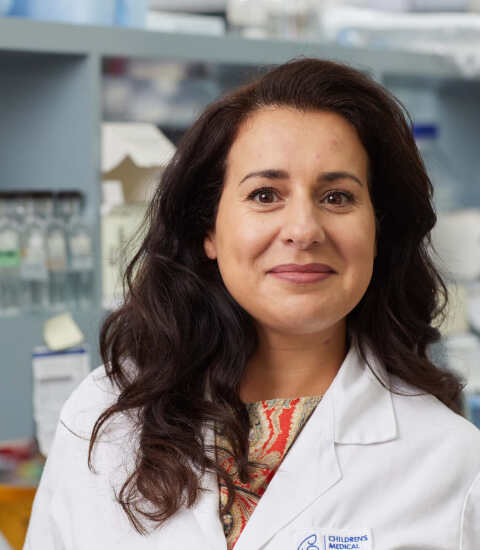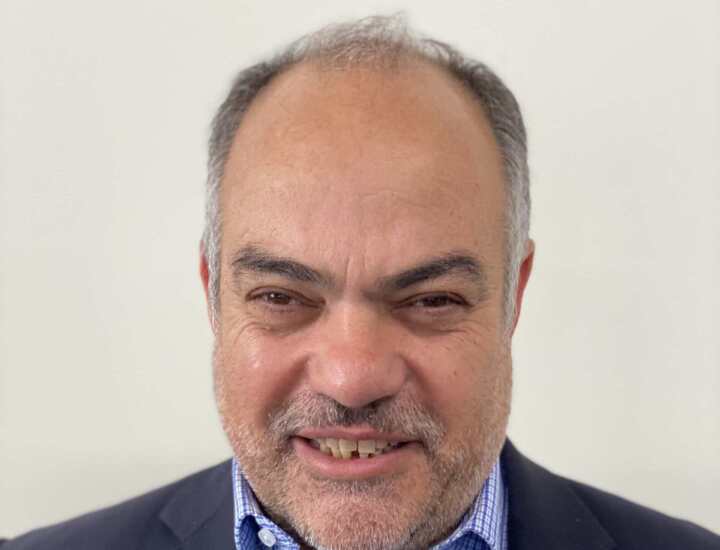8 November, 2024
This is a summary of the webinar that was presented on Saturday 19th October by Associate Professor Anai Gonzalez-Cordero, from the Children’s Medical Research Institute, Sydney, Dr Ceecee Britten-Jones from the Centre for Eye Research, Melbourne, and Retina Australia Board member, Dino Farronato.
A video recording of this webinar is also available here.
The use of cell therapy in the development of a universal therapy for inherited retinal blindness
Associate Professor Anai Gonzalez-Cordero, Children’s Medical Research Institute, Sydney
One of the main causes of blindness in the developed world is inherited retinal degeneration, caused by the loss of the photoreceptor cells. In considering treatment for these diseases, the stage of eye disease determines the treatment options available.
In pre-clinical research for therapy, in the case of mid stage disease, drugs or gene therapy can be used as there is a requirement for some healthy cells to be present for the therapy to work.
In the case of advanced disease, one option is the electronic array implant or bionic eye therapy, which is currently undergoing clinical trials. The other option is the replacement of photoreceptor cells using cell therapy. These cells can be created using stem cells created from a healthy patient, with a bank of cells created to create millions of photoreceptor cells that can also be banked and then have a population of cells that can be transplanted into patients.
This approach is feasible because the eye is an accessible place to carry out surgery (although very delicate and specialised), the cells to be introduced have a relatively simple structure and each cell needs to connect to one synapse in the back of the eye.
How are these cells made in the lab?
It takes 15-17 weeks to grow photoreceptor cells to the stage at which they are ready for transplantation into patients, a costly and complex process. Thousands of organoids are created. The organoids contain all the cell types of the retina, but the photoreceptor cells need to be isolated for use in therapy. This is done using a viral vector – so gene therapy is also being used at this stage – to mark the photoreceptor cells, using a jellyfish protein call GFP. The cells can then be isolated and transplanted.
In a mouse with very advanced stage eye disease, 500,000 cells have been replaced and allowed to mature in the eye for 3 months. Studies were carried out using both a dark and light chamber. Being nocturnal, mice have a preference for dark spaces, so a mouse with normal vision will preference the dark chamber. However, mice with advanced disease show no preference as they are unable to detect the difference between the two chambers. After 3 months, the treated mice show a significant preference for the dark chamber. There was also a control group that were given a sham transplant with defective cone cells that demonstrated no preference for either chamber. This was a remarkable result.
Pathways to the clinics
Future progress requires:
- Generation of GMP iPSC cell lines that can be used in the manufacture of stem cells in humans – safety, documentation, quality control
- Development of a GMP laboratory – enhancing Australian capability in stem cell manufacturing for use in humans
- Psychosocial research (UNSW) focussing on consumer priorities and impressions of stem cell therapies.
In order to be able scale up the process, robots are being used to assist with the manufacture of the cells. This system will specifically support:
- Large-scale reprogramming, expansion and banking of iPSC lines, for distribution to researchers
- Large-scale culturing and differentiation of iPSCs into various types of organoids
- Reduce variability to sustain GMP production.
This research is being undertaken in several other places in the world including the USA, Japan – where they have already transplanted two patients with pieces of retinal organoids, a group in the UK that is also working to develop GMP manufacturing and moving this work into clinical trials. It is exciting that we have this research happening in Australia so that in the future these clinical trials will be available to patients in this country as well as overseas.
Decoding the genetic puzzle of inherited retinal disease
Dr Ceecee Britten-Jones, Centre for Eye Research Australia, Melbourne
Inherited retinal diseases can be caused by over 300 different genes, and this number is only what is currently known. Changes in these genes are like spelling mistakes, leading to severe damage to protein function leading to degeneration in the rods and cones in the eye. Generally, most IRDs can be attributed to changes in a single gene – determined via a genetic diagnosis.
However, there are a lot of overlapping clinical presentations, with some genes having the ability to cause multiple different diseases, and also each disease can be caused by multiple different genes. Thus sometimes diagnosis can be difficult, and getting an accurate and complete diagnosis is a challenge without specific genetic information.
The benefits of genetic diagnoses in IRDs include:
- Diagnostic clarity and management
- Family information and planning
- Inform potential eligibility for gene-targeted therapies
- Help scientists learn more about the disease mechanism, in order to develop new treatments
What happens when you have a genetic test done?
- Blood or saliva sample is sent to the laboratory and sequenced.
- The genome (about 3 billion base pairs) is then aligned to the reference genome to find, map and filter what changes have occurred
- Each genetic change is evaluated to see if there is evidence that it might be causing the disease. This evidence can include computer-based predictions, research studies, and reports of families around the world who have the same change documented in scientific articles.
- In a clinical test, a report is prepared to indicate whether a change causing disease (a genetic diagnosis) has been found.
However, a definitive result is usually only possible in 50 – 60% of cases. If a genetic cause is not found, there could be several reasons:
- Test limitations – technology limitations, or changes might be hard to detect or may not have been covered in the initial sequencing technique used.
- There could be unknown DNA changes identified, but that change is not well understood – not enough evidence exists to associate it with a particular disease yet. A genetic change will only be reported as a diagnostic finding when we are more than 90% confident that it is causing disease.
- There could be missing genes – some changes have not been linked to certain diseases yet.
What happens if a result isn’t obtained?
- Re-test using a different technique – but this may not be helpful if a variant possibly linked to disease was already found, there wasn’t enough evidence to confirm it. Another test would likely find the same change without providing additional evidence.
- Testing other family members could help identify the inheritance of the changes. This can be useful because if the change is only found in family members with the inherited retinal disease and not in those without it, it suggests the change might be causing the condition.
- Other experiments, e.g. stem cells, tissue cultures to try and identify what these genetic changes mean for the rod and cone cells
- National/International collaboration with other researchers to see whether other teams have found similar changes
Currently work is being undertaken by the VENTURE research team, supported by The Advanced Genomics Collaboration (a joint initiative with the University of Melbourne and Illumina), on a new platform to try and find a diagnosis for those people who have not yet been able to get a genetic diagnosis. This study will also help learn more about these inherited retinal diseases, with the hope of enabling access to new treatments as they become available.
This involves:
- Clinical testing including an eye test, learning about their experience and family history
- Testing of the whole genome to try and find new genetic changes, which may include some that have not yet been recognised to cause disease.
Genomic sequencing produces an enormous amount of data and processing it is long and tedious. Data privacy is also an important consideration, while collaboration and anonymous data sharing with other researchers is crucial for identifying other families with the same disease. The team is working collaboratively with other teams around Australia, including the Australian Inherited Retinal Disease Registry and DNA Bank in Western Australia, as well as other National Rare Disease Registries, to actively seek new diagnoses for families affected by inherited retinal diseases.
Eventually, we would love to follow the path of other large genomic programs and biobanks around the world to make genomic medicine more accessible in Australia. For example, the 100,000 Genome Study in the UK, which analysed the DNA of 100,000 genomes of patients with cancer and rare diseases, has resulted in the UK National health Service being able to offer genome sequencing to all patients with an eligible condition.
Currently in Australia, there is no easy way to access free genetic testing, and we don’t have a national structure for gene discovery in inherited retinal diseases. This means that there are fewer opportunities for people to be tested, and due to limited resources, findings a diagnosis can be slower.
How can I join a genetic study?
The team runs an IRD registry (VENTURE) where people can sign up to be contacted about research opportunities, including genetic studies, and clinical trials. To find out more information and to join the VENTURE study, visit this link.
The VENTURE study - a participant's view
Dino Farronato, Retina Australia Board member
If there is an opportunity to be involved in research projects or clinical trials, then do take that opportunity.
I have low vision due to retinitis pigmentosa, and I am progressively losing my vision. My introduction to the world of RP was in my 30s – at the time I knew nothing about it, but since the diagnosis I have sought out as much information as I can about what is happening in research and possible treatments.
Over the past few years I have been fortunate to be involved in the VENTURE study being carried out by CERA. This study is aimed at identifying the genetic causes of RP.
There are lots of reasons to participate in clinical trials and research – one is that it can benefit you personally, but also it helps provide the data to the researchers, and thirdly, finding out as much about the disease as possible is empowering. This has helped me feel much more optimistic about the future.
Even if you aren’t involved for yourself, become involved for those who are coming after you. You can find out more information about what clinical trials are currently available on the Retina Australia website here.
Get involved – make a difference.
You can read a full interview with Dino in the Summer 2024/2025 edition of the Retina Reporter.
https://retinaaustralia.com.au/cell-therapy-genetic-research-and-a-patients-perspective/
Other Blogs

World Geographic Atrophy Day 2025
A New Era of Hope for Vision Preservation Geographic Atrophy (GA), a progressive and irreversible form of advanced age-related macular degeneration (AMD), has long been a...

World Research Summary by Dr Catherine Civil
Hot Off The Press There are some exciting happenings in the research world this month. Click on the hyperlinks for further...

Australia Approves Second Treatment for Geographic Atrophy
Astellas' IZERVAY® (avacincaptad pegol) has been approved for use in Australia by the TGA Astellas...



